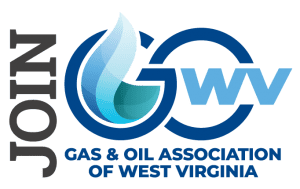Casey Junkins
Business/Energy Writer
WHEELING — Federal officials believe natural gas prices will climb for the next two years, which alarms those concerned with how Marcellus and Utica shale drilling impacts the environment — especially if President Donald Trump scraps President Barack Obama’s planned 45 percent cut for methane emissions.
According to U.S. Energy Information Administration projections, the average spot price for a 1,000-cubic-foot unit of natural gas should average $3.66 for the entire year, which reflects a steady increase from Tuesday’s price of about $3.30, while officials believe the price for 2018 will reach an average of $3.85.
In contrast, the average price per unit in 2016 was about $2.59, with a low of $1.78 coming in March. Until March, the price had steadily declined from a high of about $6.19 in February 2014.
Part of the reason prices are increasing is the demand for natural gas to generate electricity, as 2016 saw a record 27.5 billion cubic feet per day burned for this purpose. Other demand drivers are increased capacity for exporting liquefied natural gas, as well as a market need for liquids such as ethane, butane and propane.
One driller that keeps growing its production levels is Oklahoma City-based Gulfport Energy, a firm that fracks in Belmont, Monroe and Harrison counties. Despite the 2016 price challenges, Gulfport grew its average daily production to 719.8 million cubic feet per day, which is a 31-percent increase from 2015.
Another company that continues investing significantly in the Ohio and West Virginia shale fields is Denver-based Antero Resources. The company’s capital budget for 2017 is $1.5 billion, which is an increase of $100 million from last year, while the company also expects to grow its daily natural gas production by about 25 percent from 2016 to 2017.
As production climbs, so do the concerns of environmentalist groups. Renee Santoro serves as director of the Energy and Environment Program at Ithica, N.Y.-based PSE Healthy Energy. She believes Pennsylvania will see natural gas production double by 2030, therefore causing greenhouse gas emissions to triple during the same time frame.
“A tripling of Marcellus-related greenhouse gas emissions will dramatically increase Pennsylvania’s contribution to the region’s climate impact — it’s an alarming finding in the context of new federal climate goals, which, under the Paris climate agreement, aim for a nationwide reduction of all greenhouse gas emissions to 12 percent below 2012 levels by 2025,” she said. “The climate doesn’t really care about state boundaries.”
The Obama administration’s Environmental Protection Agency maintained that methane — the primary component of natural gas — could be 25 times worse for the atmosphere than carbon dioxide, particularly if it leaks into the air before burning.
As coal industry leaders lobby Trump to relax or completely scrap the carbon dioxide-targeting Clean Power Plan, many expect the new president to take similar action against Obama’s efforts to curb pollution from the oil and natural gas sectors.
“The U.S. is leading the world in the production and refining of oil and natural gas and in the reduction of carbon emissions, which are near 20-year lows. We look forward to working with the Trump administration on putting in place policies to continue our nation’s energy leadership that will benefit American consumers and workers, while protecting the environment,” American Petroleum Institute President and CEO Jack Gerard said.
Although Michael Brune, executive director of the San Francisco-based Sierra Club, vehemently disagrees with the new administration’s direction, he acknowledges the regulations are in danger.
“What Trump has released is hardly a plan: It’s a polluter wish list that will make our air and water dirtier, our climate and international relations more unstable and our kids sicker,” he said. “This is a shameful and dark start to Trump’s presidency, and a slap in the face to any American who thought Trump might pursue the national interest.”

